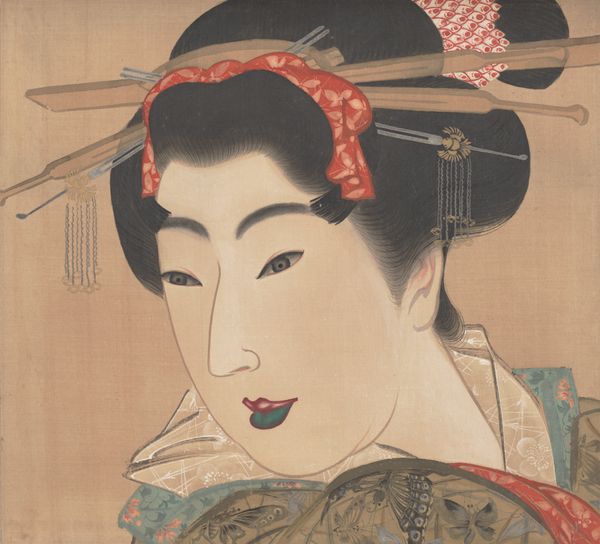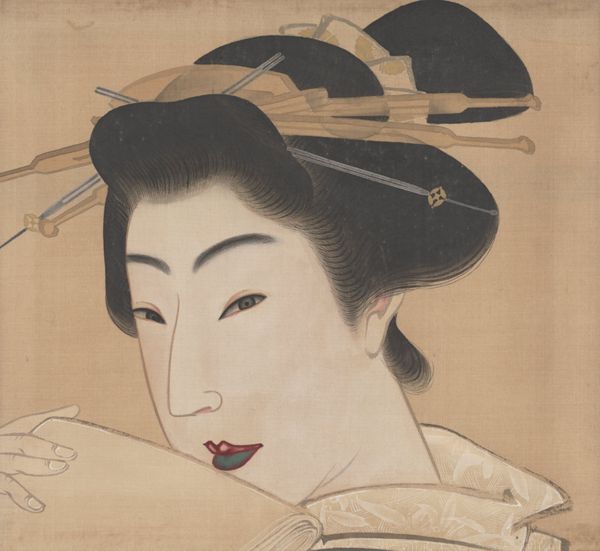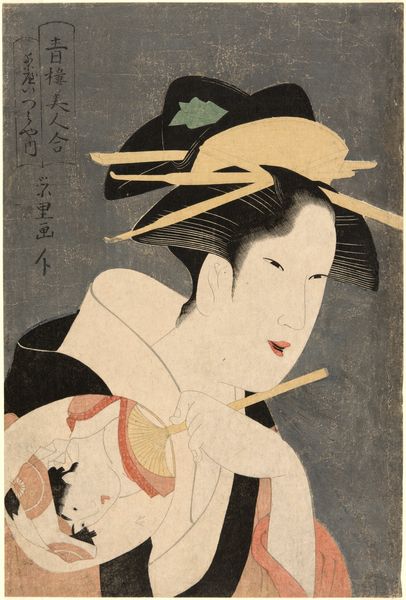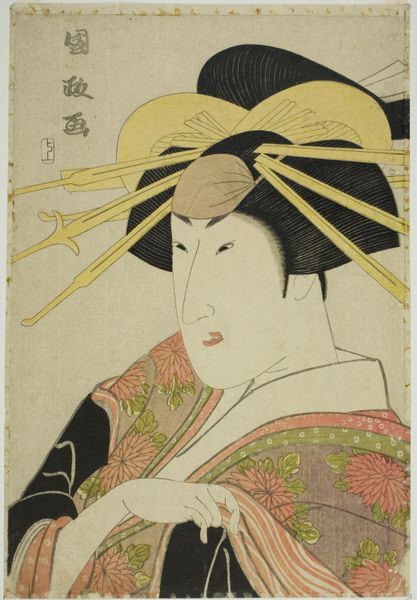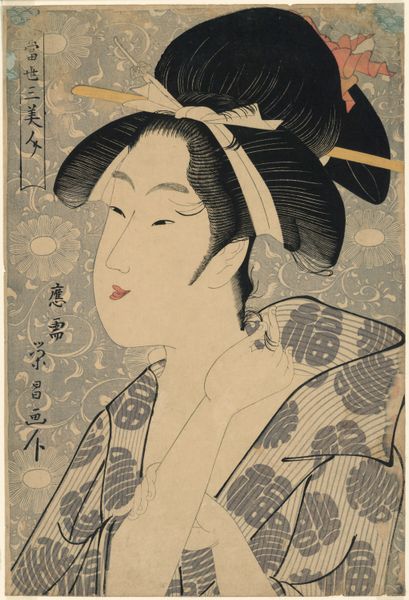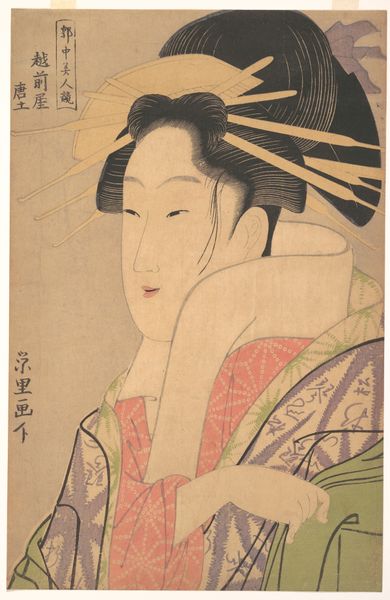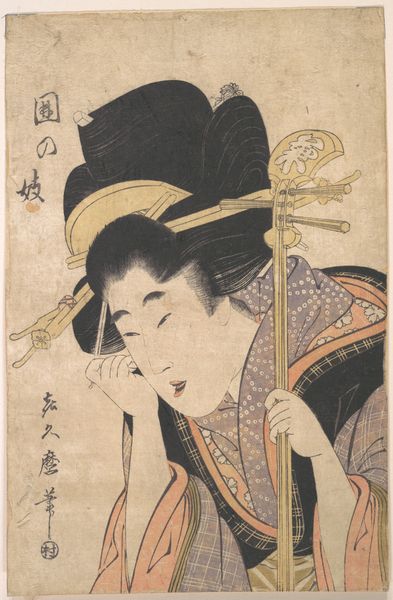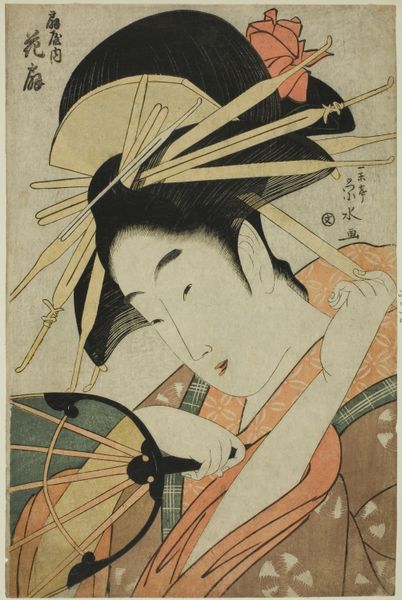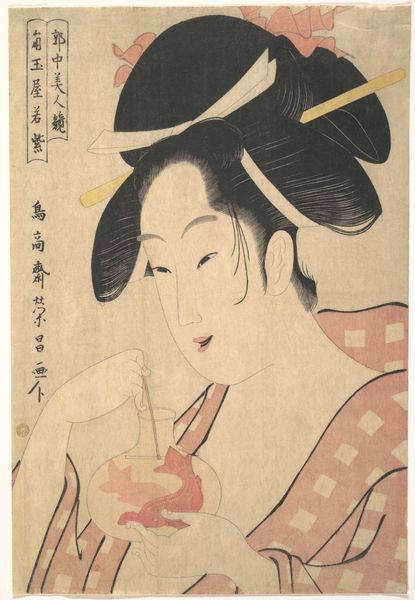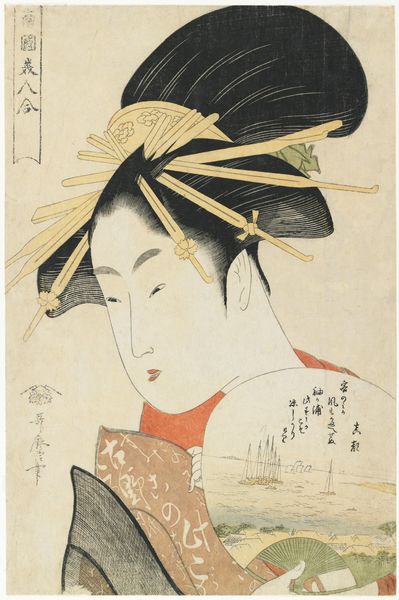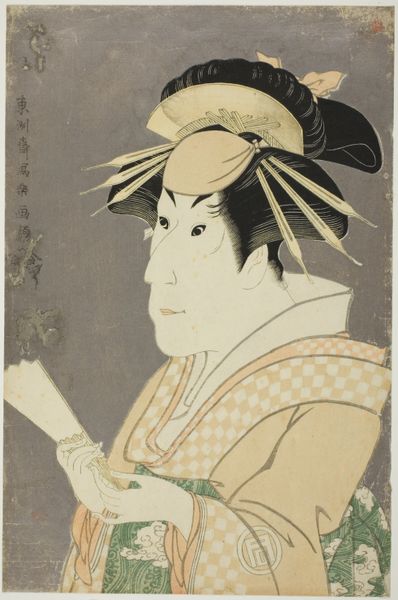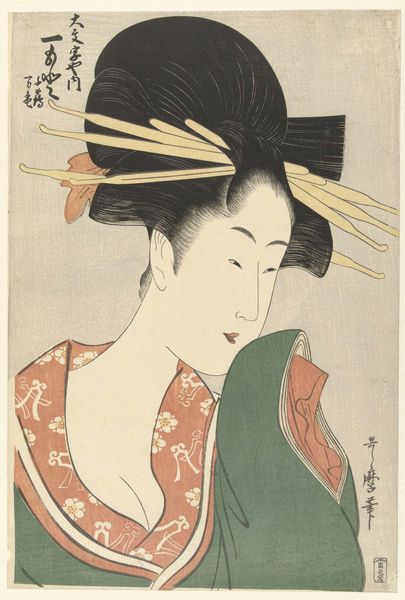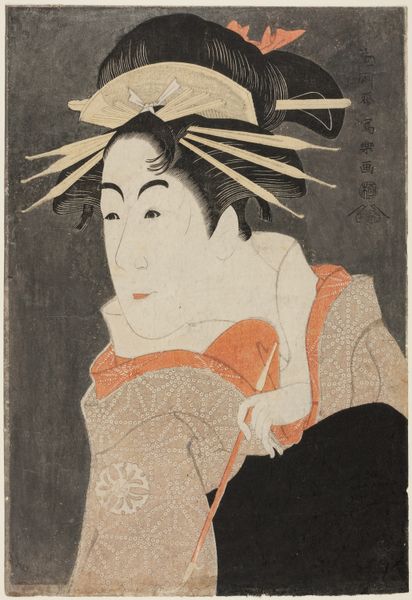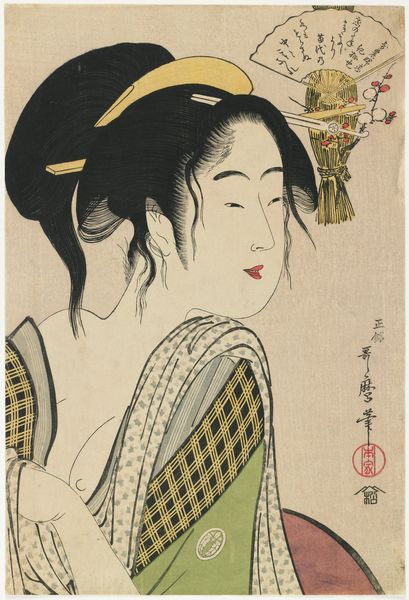![City Girl [left of a triptych of Three Beauties] by Mihata Jôryû](/_next/image?url=https%3A%2F%2Fd2w8kbdekdi1gv.cloudfront.net%2FeyJidWNrZXQiOiAiYXJ0ZXJhLWltYWdlcy1idWNrZXQiLCAia2V5IjogImFydHdvcmtzL2UxNTI4NzkxLWE1NDYtNDE3Yi1hNzI5LTQwOGMxNjgzMjdkMy9lMTUyODc5MS1hNTQ2LTQxN2ItYTcyOS00MDhjMTY4MzI3ZDNfZnVsbC5qcGciLCAiZWRpdHMiOiB7InJlc2l6ZSI6IHsid2lkdGgiOiAxOTIwLCAiaGVpZ2h0IjogMTkyMCwgImZpdCI6ICJpbnNpZGUifX19&w=3840&q=75)
City Girl [left of a triptych of Three Beauties] c. 1830s
0:00
0:00
Dimensions: 10 7/16 × 11 7/16 in. (26.51 × 29.05 cm) (image)55 3/8 × 25 5/16 in. (140.65 × 64.29 cm) (mount, without roller)
Copyright: Public Domain
Curator: Oh, there's such a serene beauty about this. Mihata Jôryû, isn't she marvelous? This is *City Girl*, painted around the 1830s. It's part of a triptych, one of three beauties, all rendered in ink. The Minneapolis Institute of Art is lucky to have her! Editor: Serene is spot on. I'm struck by the intimacy. It feels as though she's about to confide a secret. And those slightly downturned eyes! It's like a little Mona Lisa moment. Curator: Indeed. The intimacy is a hallmark of Ukiyo-e, literally “pictures of the floating world.” It’s about capturing the ephemeral beauty of everyday life and popular culture, especially the lives of courtesans and actors. The whole Yamato-e tradition really valued that kind of accessible beauty. Editor: It's interesting, isn’t it, how these prints, these paintings became almost…commodities? Vessels of popular desire consumed by a burgeoning urban class in Edo. They're beautiful, yes, but also speak to something much broader. The male gaze, social mobility through art, all that jazz. Curator: Absolutely! And yet, within that framework, artists like Jôryû could imbue their subjects with such individual character. Look at the details—the precise arrangement of the hair ornaments, the subtly patterned kimono. It’s both archetype and individual. I almost get the sense of seeing her in a fleeting moment, you know? Editor: Yes! A fragile beauty held between the closed fan, there is also an unspoken drama about the female role and feminine expectations… like she is trapped in the frame of that fan, restricted and controlled. How about that heavy makeup and tightly held face? How 'free' and ‘floating’ could this existence have been, actually? Curator: I hear you. The floating world could certainly have its darker currents. And as we look at "City Girl" today, through the lens of our own world, all sorts of layers add complexity. The past refracted and reflected. Editor: Precisely! In her slightly troubled, downturned gaze, there's much that stays unknown about who the figure might be or might not be; a city girl perhaps also lost in time…
Comments
minneapolisinstituteofart almost 2 years ago
⋮
Although they are unsigned, these three paintings exhibit the idiosyncratic style of artist Mihata Jōryū’s beauties. At first glance their faces look similar, but Jōryū juxtaposes three types of femininity—a prostitute holding folded tissue paper, a geisha (entertainer) with a fan, and a city girl. Each one represents a different type of charm through her gesture and expression. Mihata Jōryū was active in Kyoto during the 1830s, and his paintings of beauties with clear-cut features and luxuriously designed kimonos became very fashionable, even in Edo (present-day Tokyo). By the 1830s many artists had come to follow Jōryū’s style, but little is known about the artist himself. Even his name is somewhat unclear, because he uses seals that read “Jōryū” and others reading “Jōryō.” His family name is believed to be Mihata, but that also is uncertain, for he used the surname Yokoyama on at least one extant painting.
Join the conversation
Join millions of artists and users on Artera today and experience the ultimate creative platform.
